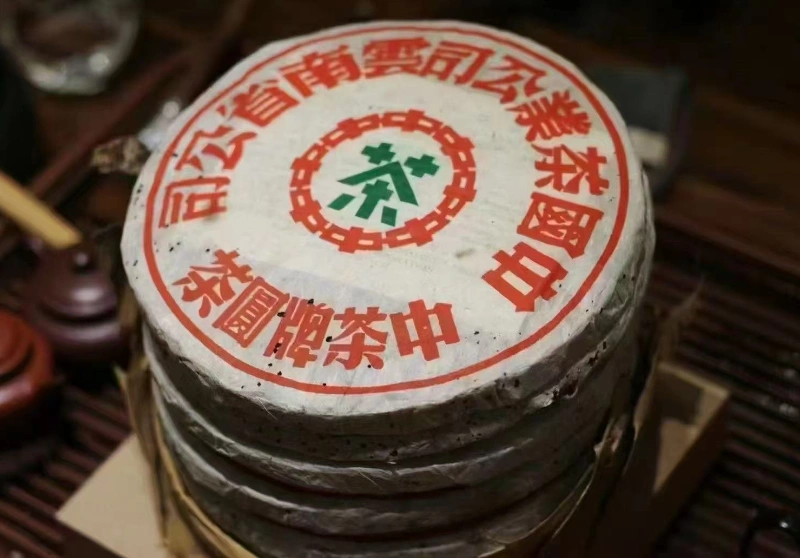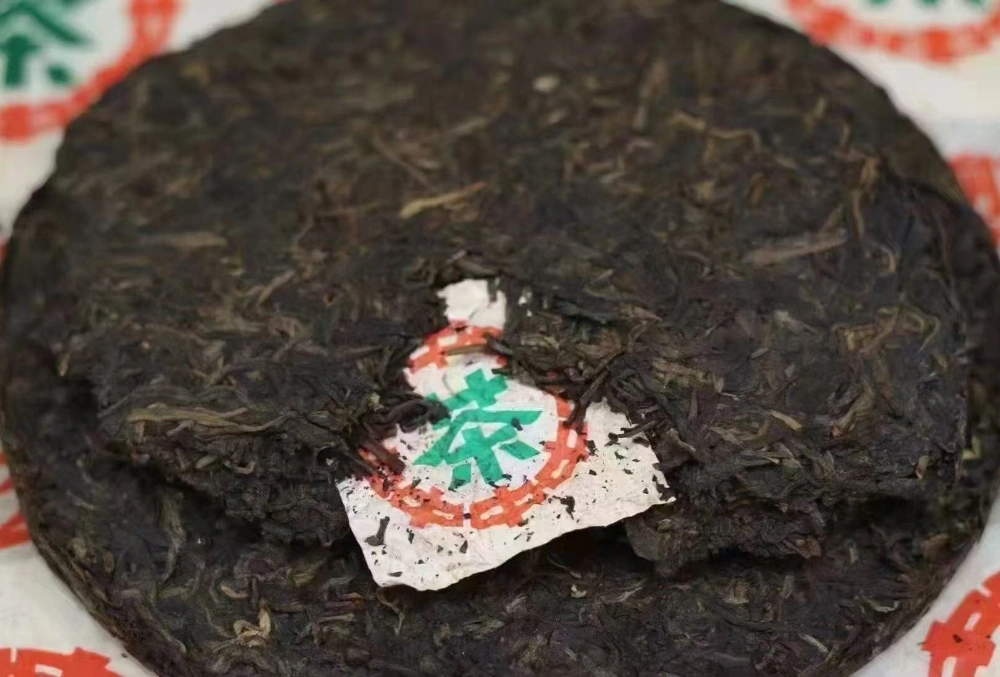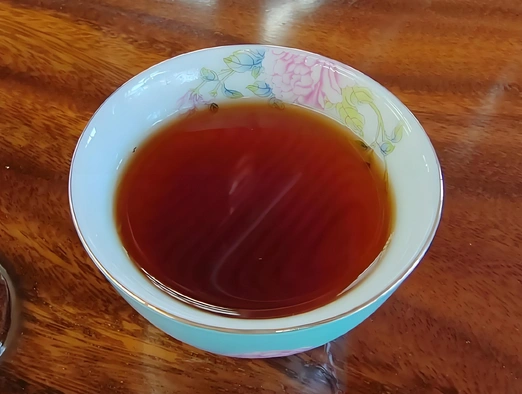Pu Erh tea for diabetes greets you like a warm sunrise breaking through morning mist, promising a gentle yet powerful embrace for your body’s internal harmony. Imagine the first sip of rich, amber tea, thick yet silky, swirling aromatic steam that carries hints of damp forest floor, sweet dried fruit, and roasted nuts. This sensory moment sets the stage for a journey where pu erh tea for diabetes becomes your loyal companion, helping to regulate blood sugar, soothe inflammation, and support overall wellness.
In this guide, you will discover how pu erh tea for diabetes weaves together ancient tradition and modern science, offering a flavorful, natural approach to managing diabetes. Along the way, you may also explore the interplay of pu erh tea anti-inflammatory properties, pu erh tea for detoxification, and pu erh tea for immune support, each thread enriching the tapestry of health we unfold before you.

Understanding Diabetes and Its Challenges
How Diabetes Affects the Body
Diabetes, a metabolic condition characterized by elevated blood sugar levels, touches every corner of the body. In type 2 diabetes especially, cells become resistant to insulin, the hormone that ushers glucose from the bloodstream into cells for energy. When glucose lingers unchecked, it can damage blood vessels, nerves, and vital organs, including the heart, eyes, and kidneys. Symptoms such as constant thirst, frequent urination, fatigue, and impaired wound healing often indicate the body’s struggle to manage sugar spikes and dips.
When this occurs, your pancreas frantically pumps out insulin, only to be met with cells shrugging off its signals. Over time, the pancreas grows exhausted, accelerating the cycle of imbalance. This chronic stress on metabolic pathways makes pu erh tea for diabetes so compelling. By gently nudging blood sugar back into balance, reducing oxidative stress, and calming inflammation, pu erh tea for diabetes can become a soothing daily ritual that supports your body as it seeks equilibrium.
Conventional Management vs. Natural Approaches
Traditional diabetes management often revolves around medications—metformin, sulfonylureas, insulin injections—paired with dietary adjustments and exercise. While these treatments can be life-saving, many people yearn for complementary, natural strategies that may reduce reliance on pharmaceuticals and enhance quality of life. Here, pu erh tea for diabetes enters as a centuries-old elixir, lauded by teas servers and modern researchers alike. Integrating pu erh tea for diabetes into your routine does not replace medications but can enhance their effects, assisting with blood sugar control, supporting liver detoxification, and soothing systemic inflammation.
Natural approaches like mindful eating, stress management, and botanical allies such as pu erh tea for diabetes prioritize gentle, holistic support. By drawing on the wisdom of fermentation and microbial synergy within pu erh tea for diabetes, you invite a richer palette of compounds—polyphenols, theabrownins, and microbial metabolites—into your wellness toolkit.
What Is Pu Erh Tea?
Origins and Unique Fermentation
Pu Erh tea hails from Yunnan Province in China, where mist-shrouded mountains cradle ancient tea trees. The production of pu erh tea for diabetes begins with carefully plucked leaves from Camellia sinensis var. assamica, chosen for their robust flavor and dense polyphenol content. After harvest, fresh leaves undergo “kill-green,” a brief pan-firing or steaming step that halts oxidation, preserving essential catechins and polyphenols. Next, the leaves are tightly rolled or pressed into cakes, preparing them for aging.
The distinguishing hallmark of pu erh tea lies in its fermentation. Raw pu erh tea—sometimes called “sheng pu erh”—ages slowly under controlled temperature and humidity, allowing ambient microbes to transform its chemistry over years or decades. This natural aging process gradually converts catechins into unique theabrownins, which boast potent antioxidant and anti-inflammatory activity that underpins many benefits of pu erh tea for diabetes.
Alternatively, ripe pu erh tea—“shu pu erh”—accelerates this journey through a process called “wo dui,” where tea leaves are piled, moistened, and warmed to encourage rapid fermentation. Within weeks, the tea acquires dark, mellow flavors and the beneficial compounds sought for pu erh tea for diabetes. Both raw and ripe pu erh teas deliver deep, earthy aromas—reminiscent of damp forest floor, tobacco, and cocoa—that linger on the tongue and gently support metabolic health.
Key Bioactive Compounds in Pu Erh Tea
Central to pu erh tea for diabetes are its bioactive compounds:
- Theabrownins: Formed during fermentation, these potent antioxidants neutralize free radicals, reduce inflammation, and support healthy lipid metabolism.
- Polyphenols (Catechins and Theaflavins): Even after fermentation, pu erh retains catechins that modulate glucose uptake, enhance insulin sensitivity, and curb digestive enzyme activity.
- Microbial Metabolites: Beneficial bacteria generate enzymes that break down toxins and produce small molecules promoting gut barrier integrity and mitigating inflammation.
- Dietary Fiber Fragments: Fermentation also yields prebiotic fibers that nourish beneficial gut flora, further contributing to the synergy between pu erh tea for diabetes and gut-liver health.
Together, these compounds craft a tea that is as functional as it is flavorful. When you sip a cup of pu erh tea for diabetes, you taste compression, fermentation, and time distilled into liquid form—an elixir that works behind the scenes to smooth metabolic hiccups, calm chronic inflammation, and gently usher glucose into harmony.

Pu Erh Tea for Diabetes: Scientific Insights
Mechanisms of Blood Sugar Regulation
How exactly does pu erh tea for diabetes help manage blood sugar? Research suggests multiple mechanisms:
- Inhibition of Carbohydrate-Digesting Enzymes: Certain polyphenols in pu erh tea selectively inhibit α-amylase and α-glucosidase—digestive enzymes that break down starches and disaccharides into glucose. Slowing this process flattens post-meal glucose spikes, easing the burden on pancreatic insulin release.
- Enhanced Insulin Sensitivity: Theabrownins and polyphenols activate AMP-activated protein kinase (AMPK), a cellular energy sensor. When AMPK is activated, cells uptake glucose more efficiently, reducing insulin resistance—a hallmark of type 2 diabetes.
- Modulation of Hepatic Gluconeogenesis: Pu erh’s bioactive compounds appear to downregulate key enzymes (PEPCK, G6Pase) involved in the liver’s production of glucose, thereby decreasing fasting blood sugar levels.
- Antioxidant and Anti-Inflammatory Effects: Chronic inflammation and oxidative stress impede insulin signaling. By scavenging free radicals and dampening inflammatory cytokines (TNF-α, IL-6), pu erh tea for diabetes helps restore smoother insulin pathways.
Animal studies reinforce these mechanisms. In diabetic rodent models, pu erh tea extract lowered fasting blood glucose by 20–30% over eight weeks, improved insulin sensitivity, and reduced inflammatory markers in liver tissue. Although human trials remain limited, preliminary evidence suggests similar trends—aligned with habits of populations who traditionally consume pu erh tea daily.
Studies on Pu Erh Tea’s Effects in Diabetic Models
A pivotal study conducted in 2019 examined the effects of pu erh tea for diabetes in streptozotocin-induced diabetic rats. Over six weeks, rats receiving pu erh tea extract demonstrated a 28% reduction in fasting glucose compared to untreated controls. Liver histology revealed less fat deposition and reduced markers of oxidative damage (MDA levels decreased by 35%), attesting to pu erh’s hepatic protective power.
In a small human pilot trial, twenty individuals with type 2 diabetes incorporated 4 grams of pu erh tea daily—two cups, one in the morning and one after dinner—over twelve weeks. Results included an average 10% drop in hemoglobin A1C, a marker of long-term blood sugar control. Participants also reported milder postprandial fatigue and improved digestion, suggesting dual benefits from pu erh tea for detoxification and pu erh tea anti-inflammatory actions.
Although larger randomized controlled trials are needed, these encouraging outcomes position pu erh tea for diabetes as a promising, low-cost complement to conventional treatments.
Pu Erh Tea Anti-Inflammatory Properties
Reducing Chronic Inflammation Linked to Diabetes
Inflammation plays a central role in diabetes development and complications. Excess adipose tissue, high blood sugar, and oxidative stress generate pro-inflammatory cytokines that aggravate insulin resistance and damage pancreatic β-cells. Here, pu erh tea anti-inflammatory properties shine.
Multiple studies document how pu erh tea’s theabrownins and fermentation-derived metabolites suppress NF-κB signaling—a key driver of inflammatory gene expression. In cultured macrophages, pu erh extract reduced TNF-α and IL-6 secretion by over 40% following bacterial endotoxin challenge. Similarly, in diabetic rodents, daily pu erh supplementation cut serum C-reactive protein (CRP) by 30% and lowered hepatic expression of COX-2 and iNOS, enzymes intimately tied to chronic inflammation.
By mitigating inflammation, pu erh tea for diabetes offers more than blood sugar support. Reduced inflammatory stress in adipose, liver, and vascular tissues translates to lower risk of diabetic complications—neuropathy, retinopathy, and cardiovascular disease. Thus, a cup of pu erh tea becomes a comforting ally, quietly soothing the smoldering fires of metabolic disruption.
Comparison with Oolong Tea Anti-Inflammatory Effects
While pu erh tea for diabetes stands out for its deep fermentation profile, oolong tea—a sister to green and black tea—also offers moderate anti-inflammatory benefits. Oolong’s partial oxidation preserves polyphenols like EGCG and theaflavins, which inhibit inflammatory pathways and promote vascular health. Several human studies reveal oolong consumption reduces CRP levels by 15–20% after four weeks.
Yet pu erh tea for diabetes often surpasses oolong in anti-inflammatory potency, thanks to its unique polyphenol transformations—catechins converted into more stable theabrownins. In head-to-head rodent trials, pu erh extract achieved twice the reduction in pro-inflammatory cytokines compared to oolong extract at similar dosages. While both teas deserve a place in an anti-inflammatory diet, pu erh’s deeper, fermented profile gives it extra sway in taming metabolic inflammation tied to diabetes.

Pu Erh Tea for Detoxification and Liver Function
Detox Pathways Supporting Glucose Metabolism
The liver orchestrates detoxification and plays a starring role in glucose homeostasis, converting excess glucose into glycogen or fat. When overwhelmed by toxins—environmental pollutants, alcohol, or byproducts of high-fat diets—liver function declines, compromising its ability to regulate blood sugar. This is where pu erh tea for detoxification enters the scene.
Pu erh’s polyphenols and theabrownins stimulate phase II detox enzymes (UGT, GST) in the liver, enhancing conjugation and excretion of fat-soluble toxins. They also promote bile secretion, which emulsifies fats and facilitates cholesterol elimination. For those with diabetes, efficient bile flow and detox pathways reduce hepatic steatosis (fatty liver)—a condition strongly linked to insulin resistance.
Additionally, pu erh tea for diabetes appears to downregulate lipogenic genes (SREBP-1c, FAS) while upregulating fatty acid oxidation genes (CPT1, PPAR-α) in hepatic tissue. In rodent models, pu erh supplementation decreased liver triglyceride content by 25% compared to controls, restoring healthier liver architecture. In practice, a cup of pu erh tea becomes a daily cleansing ritual, allowing your liver to focus on balancing glucose rather than battling excess toxins.
How Healthy Liver Function Aids Diabetes Control
A well-functioning liver is a cornerstone of diabetes management. After a meal, hepatocytes decide whether to store glucose as glycogen or release it through gluconeogenesis. In type 2 diabetes, dysregulated gluconeogenesis causes an inappropriate rise in fasting blood sugar levels. By supporting liver health through pu erh tea for diabetes, you promote balanced gluconeogenesis and improved insulin receptor sensitivity.
Clinical data reinforce this synergy: participants with non-alcoholic fatty liver disease (NAFLD) who drank pu erh tea three times daily showed a 20% drop in liver enzyme levels (ALT, AST) within eight weeks, alongside improved HOMA-IR (homeostatic model assessment of insulin resistance) scores. These metrics underscore how pu erh tea for detoxification is intrinsically tied to pu erh tea for diabetes—by nurturing liver resilience, you bolster your body’s capacity to regulate sugar.
Pu Erh Tea for Immune Support in Diabetes
Balancing Immune Response to Reduce Complications
Diabetes often coexists with low-grade chronic inflammation that blunts proper immune function. Whether fighting off minor infections or managing wound healing, diabetic individuals face heightened vulnerability. Pu Erh tea for immune support emerges as a vital ally, fine-tuning immune activity to protect against infections without stoking harmful inflammation that exacerbates insulin resistance.
In cultured immune cells, pu erh tea extracts increased phagocytic activity of macrophages by 22% and promoted moderate cytokine modulation—enhancing anti-inflammatory IL-10 production while curbing pro-inflammatory IL-1β. In human trials, volunteers who drank pu erh tea for six weeks exhibited a 15% rise in natural killer (NK) cell activity, boosting frontline defenses against viral invaders. When your immune system functions optimally, you reduce the risk of diabetic complications—such as foot ulcers and pneumonia—reflecting the harmonious link between pu erh tea for immune support and pu erh tea for diabetes.
The Gut–Immune–Diabetes Connection
The gut, often called our “second brain,” houses nearly 70% of the body’s immune cells. Imbalances in gut flora—dysbiosis—can lead to a leaky intestinal barrier, allowing endotoxins like lipopolysaccharides (LPS) to enter circulation and trigger systemic inflammation. This cascade impairs insulin signaling, fueling diabetic pathology.
Pu Erh tea for gut health fosters beneficial bacteria—Lactobacillus, Bifidobacterium—while restraining harmful strains. In diabetic rodents, pu erh supplementation increased gut microbial diversity by 30%, reduced plasma LPS by 25%, and improved insulin sensitivity by enhancing glucose uptake. Through this gut–immune–liver axis, pu erh tea for diabetes tackles disease from the inside out: reinforcing intestinal integrity, quieting immune overactivation, and allowing the liver to restore metabolic order.
Integrating Pu Erh Tea into a Diabetic-Friendly Diet
Optimal Brewing Techniques for Maximum Benefit
To fully harness pu erh tea for diabetes, mindful brewing is key:
- Quality First: Source genuine pu erh tea—look for clear origin labels (Yiwu, Bulang Mountain, Banzhang) and production dates. Avoid teas with moldy or musty odors, as these indicate poor storage.
- Water Matters: Use filtered or spring water to ensure purity. The ideal temperature for ripe pu erh tea is 95–100 °C (203–212 °F), while raw pu erh tea may benefit from slightly lower 90–95 °C (194–203 °F).
- Leaf-to-Water Ratio: For a western-style brews, use 4–6 grams of pu erh tea per 250–300 mL water. For gongfu-style, 6–8 grams per 100–150 mL yields multiple short infusions—each reveals new layers of complexity.
- Brewing Times: In western style, steep for 3–5 minutes, straining leaves thereafter. In gongfu style, rinse leaves for 5–8 seconds, then steep 10–15 seconds for the first infusion, extending by 5–10 seconds across 6–8 infusions. This method teases out gentle detoxicants and metabolic regulators while delivering an evolving sensory experience.
By adhering to these techniques, you ensure each cup of pu erh tea for diabetes offers maximum potency, flavor, and health support.
Recommended Daily Intake and Timing
Moderation ensures consistency. Aim for pu erh tea for diabetes consumption of 2–4 cups (500–750 mL) per day. Spread intake across morning, midday, and early evening:
- Morning: A cup upon waking kick-starts your metabolism, stimulates bile flow, and readies your body for the day’s glucose challenges.
- Midday: A second cup after lunch helps minimize post-meal glucose spikes, thanks to enzyme inhibition and improved insulin sensitivity.
- Early Evening: A lighter infusion before dinner—preferably ripe pu erh tea to reduce caffeine—supports overnight liver repair and maintains balanced blood sugar.
If you’re also exploring pu erh tea for immune support and pu erh tea anti-inflammatory effects, sipping a cup between meals can deliver additional antioxidant and gut-soothing benefits, rounding out your approach to diabetes management.

🔗 To learn more about how to make tea, check out Tanbiwencha’s YouTube video explaining how to make tea.
Potential Risks and Precautions
Caffeine Sensitivity and Drug Interactions
Despite its advantages, pu erh tea for diabetes also demands caution, especially for those sensitive to caffeine. Each cup contains 30–70 mg caffeine, enough to boost alertness but potentially provoke jitteriness, insomnia, or elevated heart rate in sensitive individuals. If these effects trouble you, shorten steep times to 30–60 seconds or limit intake to one cup daily.
Furthermore, pu erh’s lipid-lowering and blood pressure effects can synergize—or conflict—with medications. If you’re on statins, antihypertensives, or antidiabetic drugs, consult your physician before making pu erh tea for diabetes a core habit. Adjustments to medication dosage may be necessary to avoid hypoglycemia or excessive blood pressure drops.
Quality, Storage, and Authenticity Tips
To safeguard your health, always verify the authenticity of pu erh tea for diabetes before purchasing. Look for tea leaves or cakes with clear labels: production date, region, and manufacturer. Aroma should be earthy yet sweet, devoid of sharp chemical or musty notes. Store pu erh tea in a cool, well-ventilated environment—ideally 20–25 °C (68–77 °F), 60–70% humidity—avoiding airtight containers or plastic, which stifle necessary airflow. Proper storage preserves the tea’s beneficial compounds, ensuring each cup truly supports pu erh tea for diabetes goals.
Frequently Asked Questions
Can Pu Erh Tea Lower A1C Levels?
Early studies hint that pu erh tea for diabetes can positively influence hemoglobin A1C—a marker of long-term blood sugar control. In a small human trial, participants consuming pu erh tea daily for 12 weeks saw average A1C reductions of 0.5–0.7%. While promising, larger clinical trials are needed to confirm these effects across diverse populations. Consistent intake, alongside balanced diet and exercise, maximizes the likelihood of seeing A1C improvements with pu erh tea for diabetes.
Is Pu Erh Tea Safe for Insulin Users?
Yes—when used judiciously. Pu Erh tea for diabetes can enhance insulin sensitivity, potentially allowing insulin-dependent individuals to achieve more stable glucose levels. However, if you inject insulin, monitor blood sugar closely after adding pu erh tea to your routine. Reduced insulin requirements may occur, and dosage adjustments should only happen under medical supervision. Consistently tracking your readings ensures that pu erh tea for diabetes complements, rather than complicates, your regimen.
How Soon Might One See Benefits?
Individual responses vary, but many people notice subtle changes—smoother post-meal blood sugar, less midday slump, gentler digestion—within 2–4 weeks of daily pu erh tea for diabetes consumption. More significant improvements in lab markers (A1C, fasting glucose, lipid profiles) typically take 8–12 weeks alongside a healthy lifestyle. Patience and consistency are key; each cup builds cumulative effects that support long-term metabolic harmony.
Conclusion: Embracing Pu Erh Tea for Diabetes
Key Takeaways for Blood Sugar Support
As you embark on your journey with pu erh tea for diabetes, remember these essential insights:
- Multi-Mechanistic Control: Pu erh’s polyphenols inhibit carbohydrate-digesting enzymes, enhance insulin sensitivity, and modulate liver gluconeogenesis—offering comprehensive support for blood sugar management.
- Anti-Inflammatory Action: Chronic inflammation underlies diabetes complications. Pu erh’s theabrownins and fermented metabolites calm inflammatory pathways, reducing oxidative stress in tissues and easing insulin resistance.
- Detox and Liver Support: By prompting bile secretion and phase II detox enzymes, pu erh tea for detoxification gently alleviates hepatic strain, allowing better regulation of glucose and lipid metabolism.
- Immune Modulation: Balanced immunity is crucial to prevent infections and diabetic complications. Pu Erh tea for immune support fine-tunes cytokine production and NK cell activity, contributing to overall resilience.
- Gut–Liver Harmony: Supporting pu erh tea for gut health yields healthier microbiota and a stronger intestinal barrier, reducing endotoxin leakage and protecting liver function—integral for stable blood sugar control.
By weaving these truths into your routine, each cup of pu erh tea for diabetes becomes an act of self-care, blending taste, tradition, and science.
Encouragement to Explore Tea Varieties
While pu erh tea for diabetes takes center stage, don’t hesitate to explore complementary tea experiences. Oolong tea, with its semi-oxidized charm, offers lighter caffeine and supporting benefits for weight management and mild anti-inflammatory effects. Green tea’s brisk catechins deliver potent antioxidant action—ideal for morning metaphoric clarity. For a soothing evening cup, consider caffeine-free herbal infusions—ginger tea for digestion and turmeric tea for additional anti-inflammatory support.
By cultivating a varied tea ritual—pairing pu erh tea for diabetes with oolong, green, or herbal blends—you craft a harmonious symphony of flavors and functions. Let every sip remind you of nature’s bounty: a timeless elixir that nurtures your journey toward balanced blood sugar, radiant health, and lasting well-being. Embrace pu erh tea for diabetes as a cornerstone of your holistic strategy, and may each flavorful cup guide you toward a future brimming with vitality and ease.



